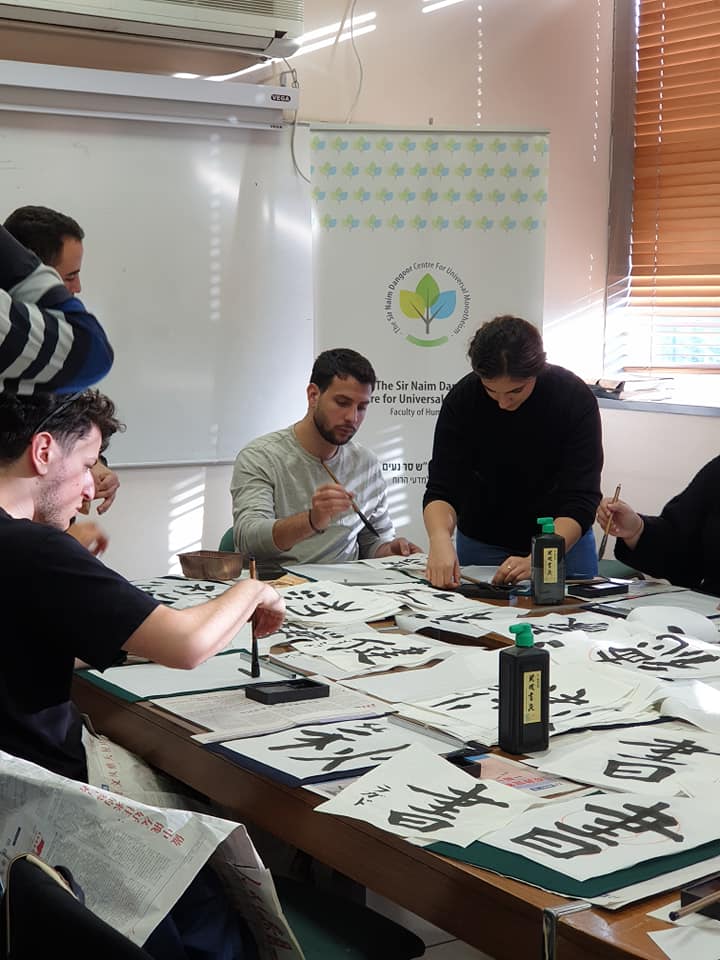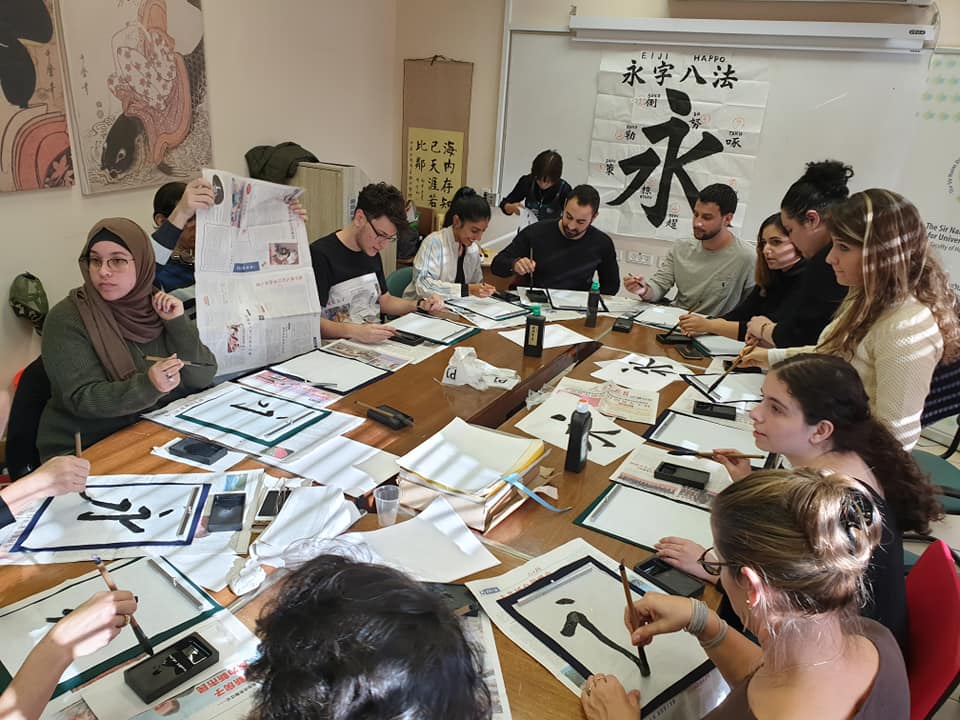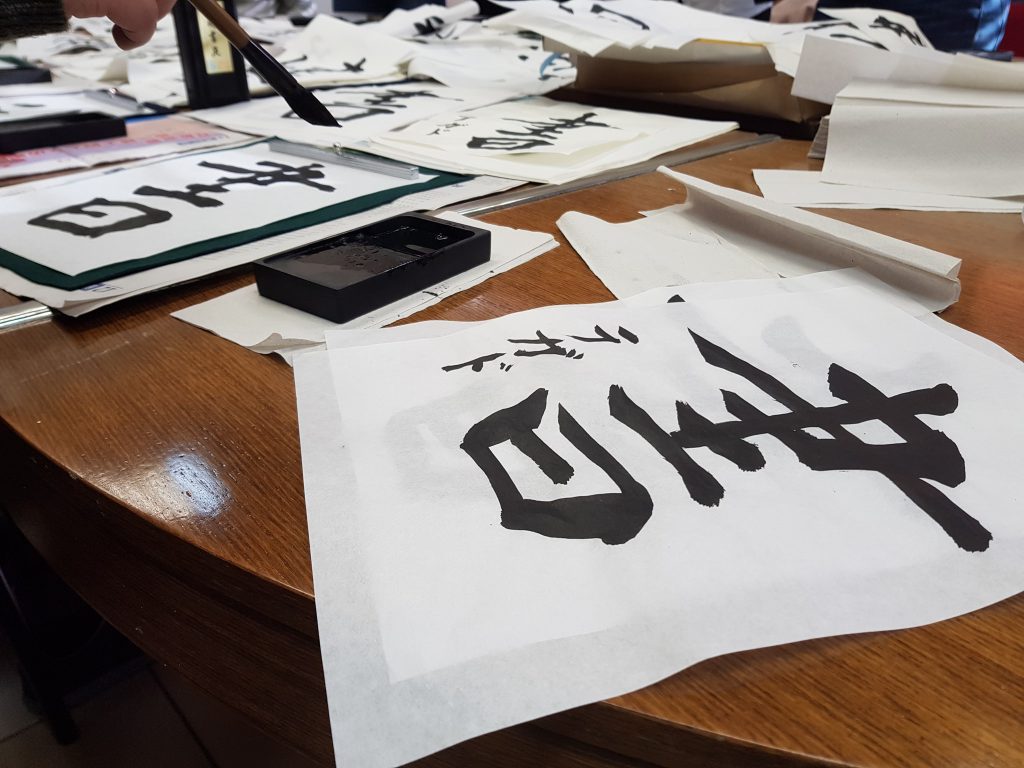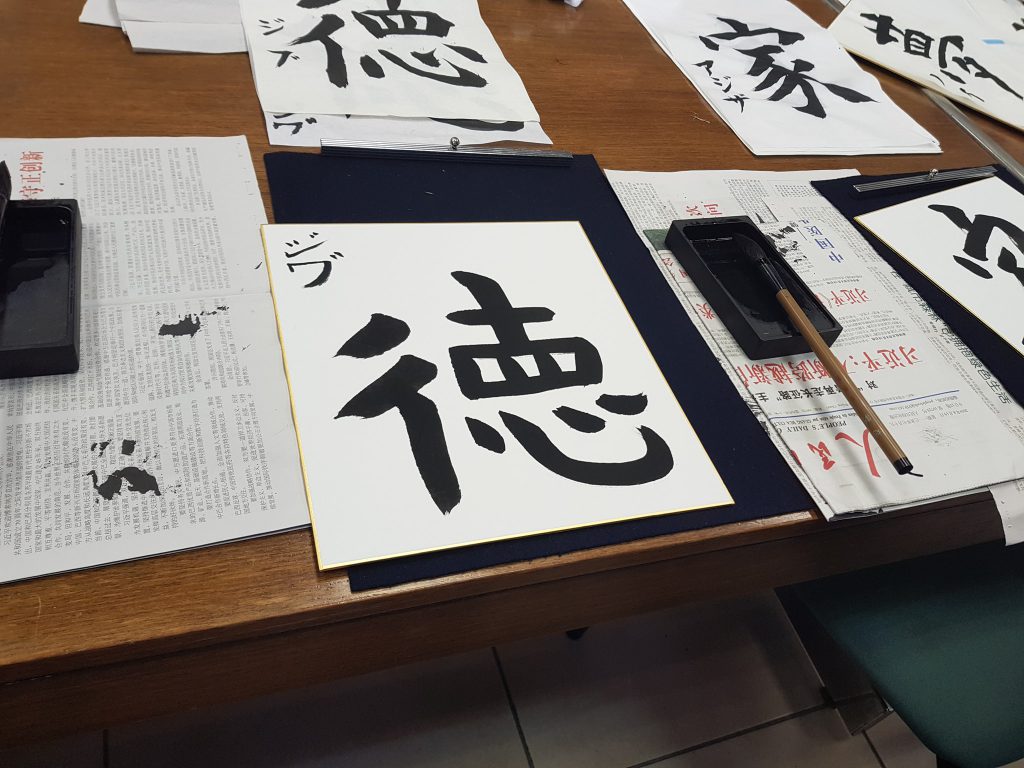The 8th year of the calligraphy workshop at the Dangoor Centre, Bar Ilan University.
On December of every year, the 8th time in a row, four veteran calligraphy teachers from Japan came to teach Japanese calligraphy to students studying Japanese culture at the faculty of Humanities as well as Bar Ilan students in general. The representative of the instructor is Sensei Tosen Usuda, the director of the Japan Calligraphy Federation, the president of the Japan Kokuji Association, and the foremost figure in Japanese kokuji art. In addition to the Bar-Ilan University, workshops are held once a year in varied Universities in Europe including Hebrew University, Torino University and Copernicus University. The masters are all made up of volunteers, aiming to teach the art of calligraphy as a spiritual writing tool used by the Japanese art specialists.
This devoted activity and interest in Japanese calligraphy have attracted a lot of interest among students every year. The original motivation of the master is to prove the necessity of calligraphy education for students’ literacy education in cooperation with Japanese language education in overseas, and to help revitalize Japanese calligraphy in Japan. At the same time, it is supported by a sense of mission to help understanding Japan.
Miho Kataoka, Lecturer of the Japanese language course
The content of the workshop is to practice patience and persistence by repeating a single kanji character selected by the student over and over again, learning the skill of brush strokes, movement, flow and breathing, and finally the ability to write on special paper. Their reward is that they take their art piece home. Examples of kanji chosen by student in Japanese language course are: “life 生” that includes all good and evil, and “beginners mind” 初心 chosen by the student of brain science who starts new things now and “honesty” 誠, chosen by another symbolizing the aspiration for simplicity and purity.
Although this is a one-day calligraphy seminar, I believe that this experience of touching Japanese culture, aesthetics, and spirituality will be utilized in the lives of students like Steve Jobs says that his calligraphy experience in college was greatly utilized later in his career.
Miho Kataoka








